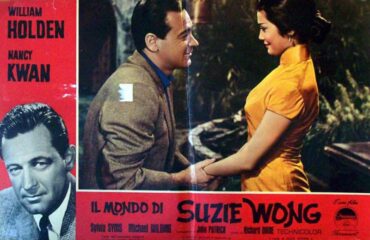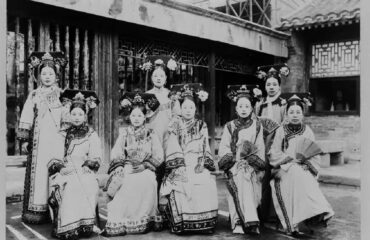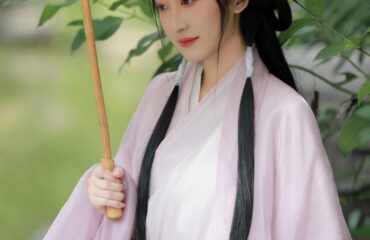Style & Structure of Cheongsam (Qipao)
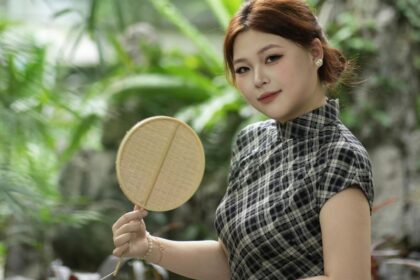
The cheongsam, or qipao, stands as one of the most iconic and recognizable garments in the world. A symbol of Chinese femininity, grace, and cultural identity, its elegant silhouette has captivated designers and wearers for over a century. More than just a dress, the cheongsam is a masterpiece of sartorial engineering, where every line, fastening, and detail serves a purpose, contributing to its unique aesthetic and flattering form. Its evolution from the loose-fitting robes of the late Qing Dynasty to the form-fitting icon of 1930s Shanghai is a story of cultural change, female empowerment, and artistic innovation. To truly appreciate the cheongsam is to understand its constituent parts—the intricate structure that underpins its timeless style. This article delves into the fundamental elements of cheongsam construction, exploring the variations that give each garment its distinct personality.
1. The Silhouette: The Foundation of Form
The most defining characteristic of a cheongsam is its silhouette, which has undergone significant transformation over the decades. The overall cut dictates how the garment drapes on the body and sets the tone for its style, be it traditional, modern, conservative, or glamorous.
- Early 20th Century (1920s): The initial modern cheongsams were relatively loose and straight, often featuring an A-line cut that fell to the mid-calf. They de-emphasized the waist and bust, reflecting a more modest and transitional period style influenced by both Chinese robes and Western flapper dresses.
- The Golden Age (1930s-1940s): This era saw the birth of the iconic body-hugging cheongsam. Tailors in Shanghai began incorporating Western techniques like darts and set-in sleeves, sculpting the dress to accentuate the natural curves of the female body. This silhouette became synonymous with elegance and sophistication.
- Modern Variations: Contemporary cheongsams embrace a wide range of silhouettes. While the classic sheath style remains popular, designers experiment with A-line skirts for a more youthful feel, H-line cuts for a minimalist look, and dramatic mermaid or fishtail hems for formal evening wear.
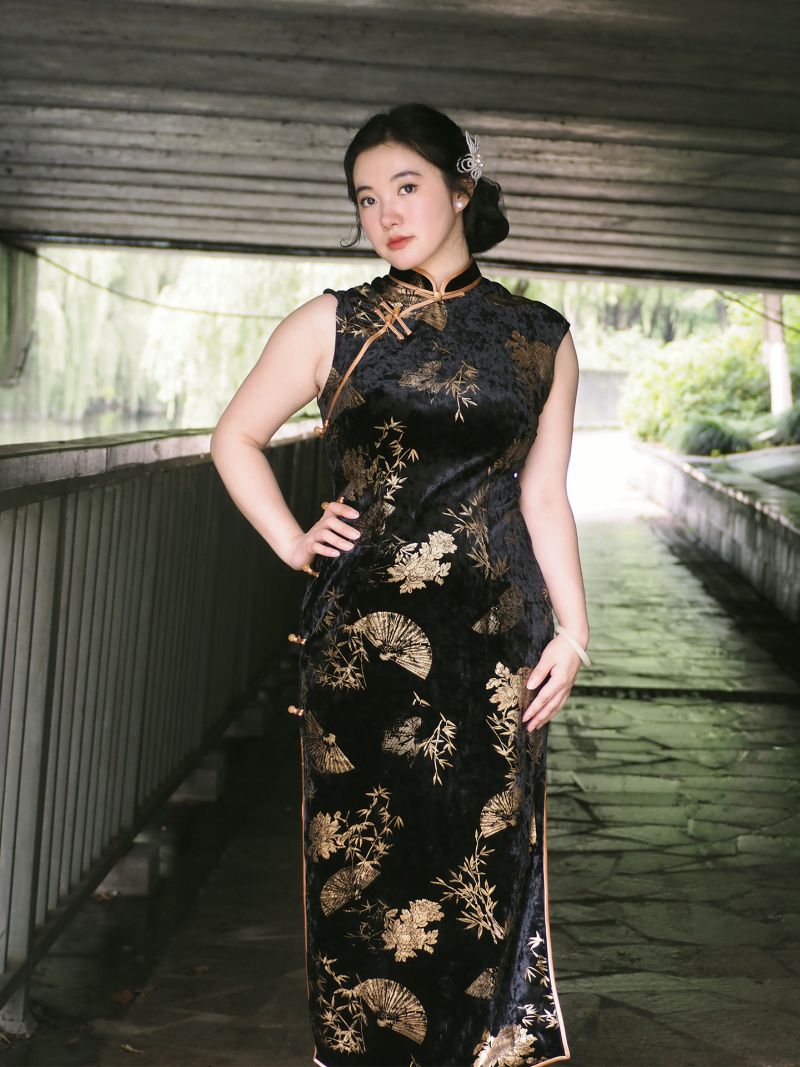
| Silhouette Style | Key Characteristics | Typical Era/Occasion |
|---|---|---|
| A-line | Loose-fitting, widens from the shoulders to the hem, does not cinch at the waist. | 1920s; Modern casual wear. |
| Sheath/Body-hugging | Form-fitting, follows the body’s natural curves, often with darts at the bust and waist. | 1930s-present; The classic formal style. |
| H-line | Straight cut from shoulders to hem, minimal shaping at the waist. | Modern minimalist styles. |
| Mermaid/Fishtail | Fitted through the bodice and hips, flaring out dramatically below the knee. | Modern evening gowns, bridal wear. |
2. The Collar (Liling – 立領): A Statement of Poise
The Mandarin collar is perhaps the most non-negotiable feature of a traditional cheongsam. This stiff, standing collar frames the face, elongates the neck, and encourages an elegant, upright posture. Its height can vary, subtly altering the garment’s formality and mood.
- High Collar (4-5 cm): Very formal and traditional, conveying a sense of dignity and reserve. It was particularly popular in the 1930s and 1940s.
- Medium Collar (3-4 cm): A versatile and common choice, offering a balance of elegance and comfort.
- Low Collar (2-3 cm): More modern and casual, providing greater comfort and a less imposing look.
- No Collar / Other Variations: Modern interpretations sometimes feature a V-neck, a scoop neck, or a delicate “water-drop” opening below a very low collar, blending traditional elements with contemporary necklines.
3. The Pankou (盤扣): Intricate Knotted Fastenings
Before the widespread use of zippers, the cheongsam was fastened with pankou, or traditional Chinese knotted buttons. These are not mere closures; they are miniature works of art. Handcrafted from bias strips of fabric stuffed with cotton, they are an essential decorative element. The pankou and its corresponding loop secure the placket and collar. While many modern cheongsams use an invisible zipper on the back or side for ease, they often retain at least one or two pankou at the collar for aesthetic continuity.
| Pankou Type | Design Description | Common Symbolism/Meaning |
|---|---|---|
| Straight Knot (一字扣) | The simplest and most common type, a single straight bar. | Simplicity, elegance, functionality. |
| Floral Knot (花扣) | Elaborate knots shaped like flowers, such as the peony or chrysanthemum. | Beauty, prosperity, nature. |
| Butterfly Knot (蝴蝶扣) | Shaped like a butterfly, often used in pairs. | Love, romance, freedom, long life. |
| Pipa Knot (琵琶扣) | A teardrop shape resembling the Chinese lute, often used on pipa plackets. | Art, music, elegance. |
4. The Placket (Jin – 襟): The Garment’s Opening
The placket is the diagonal opening that runs from the base of the collar across the chest. It is a defining structural element inherited from Manchu robes. The direction and shape of the placket can vary, creating different visual effects.
- Right-Opening Placket (Dajin – 大襟): This is the most classic and common style for women’s cheongsams. The placket begins at the center of the collar, curves down under the right armpit, and is fastened with pankou.
- Center Placket (Duijin – 對襟): A straight opening down the front, similar to a modern jacket. This style is less common for dresses but can be found on cheongsam-style tops and jackets.
- Pipa Placket (Pipa Jin – 琵琶襟): A more curved, asymmetrical placket that resembles the shape of a pipa (Chinese lute). It creates a graceful, flowing line across the bodice.
- Slanted Placket (Xiejin – 斜襟): A placket that runs diagonally from the collarbone straight to the armpit without a pronounced curve.
5. Sleeves: From Modesty to Modernity
Sleeve design has a significant impact on the overall feel of a cheongsam. The style has evolved dramatically, reflecting changing fashions and needs.
- Sleeveless: A popular modern style, perfect for warm weather and formal evening events. It highlights the shoulders and arms.
- Cap Sleeve: A very short sleeve that just covers the shoulder, offering a touch of modesty while maintaining a light, contemporary feel.
- Short Sleeve: Extends to the mid-bicep, a classic and practical choice for both casual and semi-formal wear.
- Elbow-length/Three-quarter Sleeve: Considered very elegant and slightly more conservative, this style is flattering on many body types.
- Long Sleeve: The most traditional and formal option, often seen on winter cheongsams or those designed for ceremonial occasions.
6. Side Slits (Kaiqi – 开衩): Functionality and Allure
The side slits on a cheongsam were born from necessity. In a long, form-fitting garment, they provide the wearer with the freedom to walk and move comfortably. Over time, the height of the slits also became a powerful fashion statement.
- Low Slits: Ending at or below the knee, these are modest and practical.
- Mid-height Slits: Ending at the mid-thigh, they offer a balance of elegance and allure.
- High Slits: Reaching the upper thigh, this is a glamorous and bold choice, popular for evening wear and associated with the “femme fatale” image of 1930s Shanghai cinema.
- Double vs. Single Slit: Most cheongsams feature double slits (one on each side) for balanced movement. Some modern designs may feature a single, often higher, slit for an asymmetrical look.
7. Fabric, Piping, and Patterns: The Soul of the Dress
The choice of fabric is crucial in defining a cheongsam’s character, dictating its drape, texture, and formality. Traditional fabrics include luxurious silk, intricate brocade, and shimmering satin, often adorned with symbolic patterns like dragons, phoenixes, peonies, and bamboo. Modern cheongsams utilize a broader range of materials, including cotton and linen for casual wear, velvet for winter elegance, and lace for romantic, bridal styles. For those seeking a deeper understanding of fabric choices and their historical context, resources like Cheongsamology.com offer detailed guides and visual archives.
A final, subtle detail is the piping (Guntiao – 滚条). These are narrow strips of contrasting or matching fabric that line the edges of the collar, placket, sleeves, and hem. Piping serves to reinforce the garment’s structure, accentuate its elegant lines, and add a sophisticated finishing touch.
The cheongsam is far more than its beautiful exterior; it is a complex tapestry of carefully considered structural elements. The interplay between the silhouette, collar, pankou, placket, sleeves, and slits creates a harmonious whole that is both deeply rooted in tradition and endlessly adaptable to modern tastes. Understanding this intricate anatomy reveals why the cheongsam has endured not just as a piece of clothing, but as a timeless icon of cultural heritage and sartorial excellence. Its structure is its story, and its style is its legacy.
